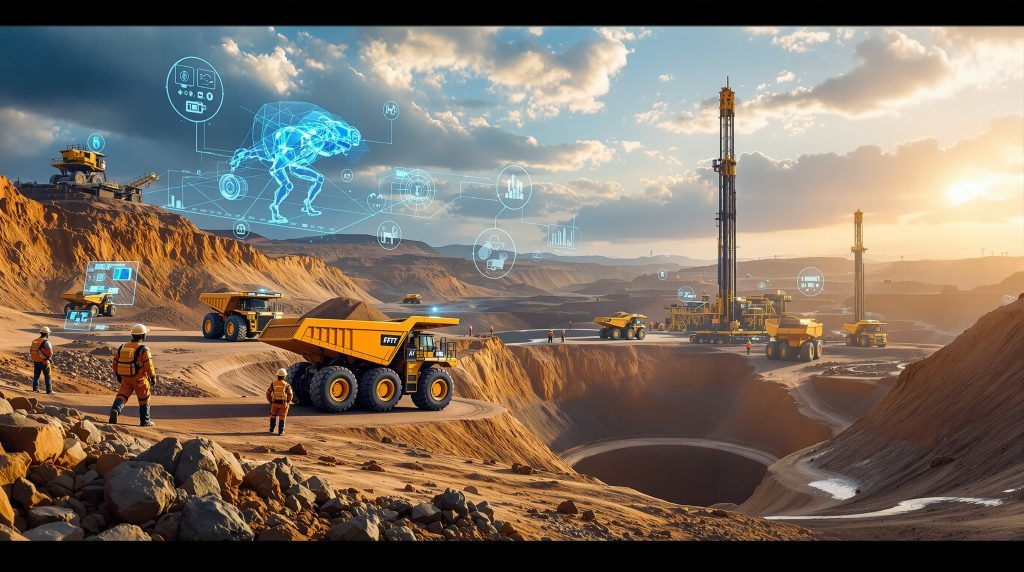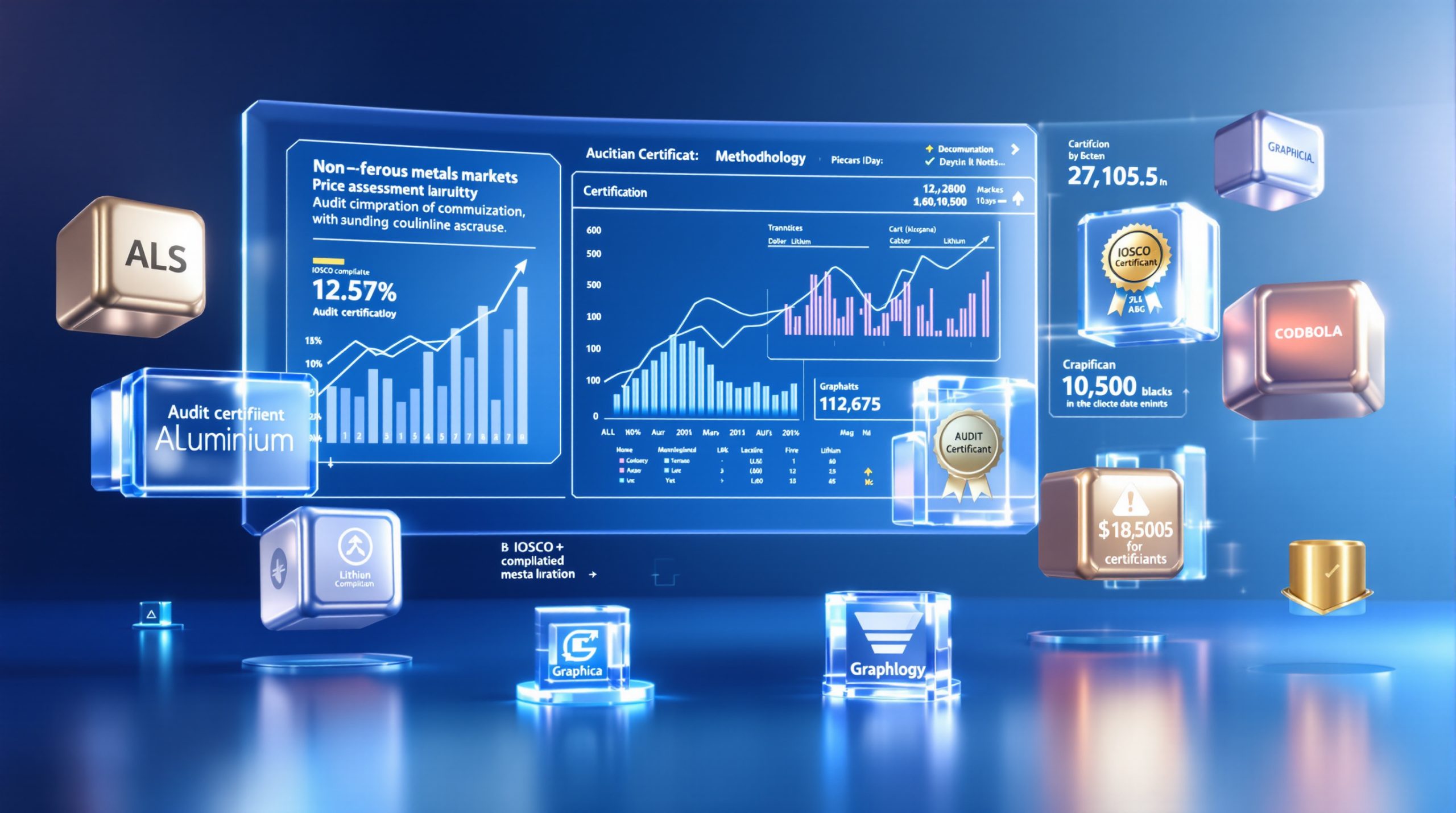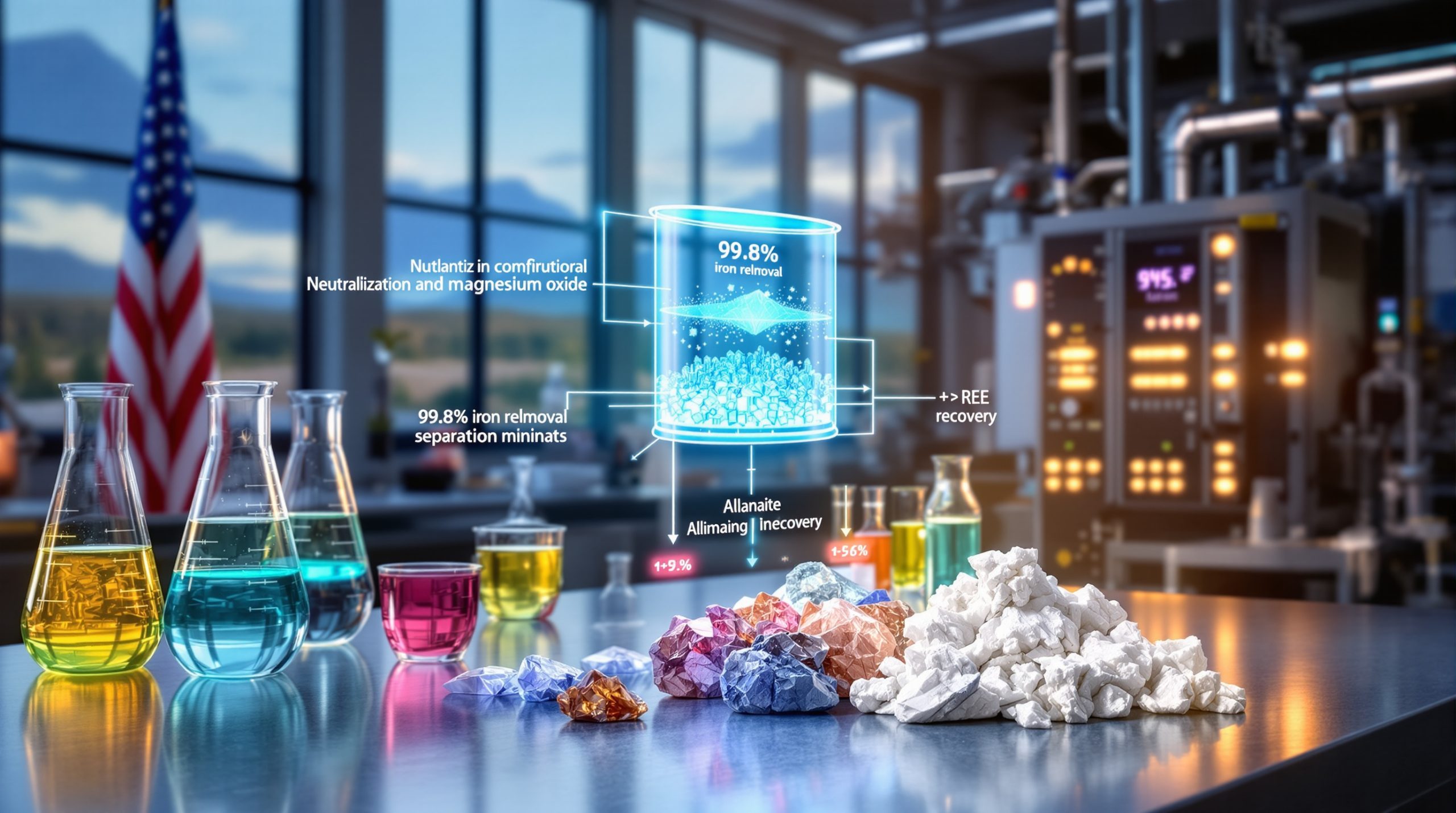How Are Autonomous Systems Revolutionizing Mining Operations?
Mining operations have undergone significant transformation with autonomous vehicles and equipment reducing human exposure to hazardous environments. Self-driving trucks now transport materials across mining sites with precision, while autonomous drilling systems operate in dangerous areas without human presence. According to McKinsey & Company, autonomous haulage systems deliver 15-20% productivity improvements in mining operations, while Rio Tinto reported operational cost reductions of approximately 13% after implementing autonomous trucks at their Pilbara iron ore operations.
Modern autonomous mining equipment demonstrates remarkable consistency, with Rio Tinto's fleet in the Pilbara achieving utilization rates 15% higher than conventional trucks by operating continuously regardless of shift changes or weather conditions.
Key Autonomous Technologies in Mining
-
Autonomous Haulage Systems (AHS): Fleet management systems coordinate driverless trucks that operate 24/7 with consistent performance, processing real-time data from onboard sensors, weather stations, and route optimization algorithms.
-
Self-operating drill rigs: Precision drilling with reduced deviation rates of <1% compared to 3-5% in manual operations, according to research published in the International Journal of Mining Science and Technology.
-
Autonomous loaders and dozers: Remote operation from control centers up to thousands of kilometers away, allowing skilled operators to manage equipment from safe, comfortable environments.
-
Robotic sampling and inspection systems: Accessing confined spaces and high-risk areas where human entry would pose significant safety risks.
Modern AHS utilize GPS positioning accurate to within 5-10 centimeters, combined with LiDAR sensors scanning 360 degrees at 20-30 times per second. These systems require dedicated wireless networks with latency below 50 milliseconds and 99.9% uptime reliability to function effectively.
Newmont Corporation's Boddington gold mine in Western Australia provides a compelling case study of autonomous technology benefits. After implementing 36 autonomous trucks in 2019, the operation reported 20% improvement in truck productivity and significant reduction in safety incidents by 2022.
Industry experts note that successful implementation depends on robust communication infrastructure, comprehensive training programs, and phased rollout strategies that account for site-specific conditions. While initial capital investments typically range from $50-150 million depending on scale, early adopters are seeing measurable returns within 18-24 months of full deployment.
How Is AI Transforming Resource Extraction and Management?
Artificial intelligence and machine learning algorithms are revolutionizing decision-making processes in mining operations through advanced data analysis capabilities. These technologies represent a fundamental shift from reactive to proactive operational management.
According to Deloitte's 2023 mining survey, AI-based predictive maintenance systems reduce unplanned downtime by 35-50% on average, while research from the University of Queensland's Sustainable Minerals Institute indicates that machine learning models can predict equipment failures 24-72 hours in advance with 85% accuracy.
Predictive Maintenance Applications
-
Equipment failure prediction: AI systems analyze sensor data from 50-200+ sensors per machine to forecast failures 24-48 hours before occurrence, enabling planned interventions.
-
Maintenance optimization: Algorithms reduce unplanned downtime by 30-50% through predictive scheduling that maximizes equipment availability during peak production periods.
-
Component lifespan analysis: Machine learning extends equipment life by 15-25% through optimized usage patterns and early intervention for developing issues.
Rio Tinto's Kennecott Utah Copper operation implemented AI-powered predictive maintenance across its concentrator, reducing unscheduled maintenance events by 40% and extending equipment life by an average of 18%, with a payback period of just 6 months.
Resource Estimation and Planning
-
Enhanced geological modeling: AI improves resource estimation accuracy by 15-20% compared to traditional methods by integrating data from drill core analysis, geophysical surveys, and hyperspectral imaging.
-
Drill targeting optimization: Machine learning algorithms increase successful drill intercepts by up to 30% by identifying patterns invisible to human analysts.
-
Production forecasting: Predictive models improve output projections by 10-15% accuracy, enabling more precise planning and financial modeling.
Swedish mining company LKAB deployed machine learning algorithms for ore grade prediction in 2021, improving prediction accuracy from 78% to 93% and enabling more selective mining practices that optimize resource utilization.
Process Automation Benefits
-
Mineral processing optimization: AI-controlled systems increase recovery rates by 3-8% through real-time adjustments to processing parameters.
-
Energy consumption reduction: Smart systems reduce power usage by 10-15% through process optimization that maximizes efficiency during various operational states.
-
Quality control improvements: Automated sorting systems achieve 97-99% accuracy in material classification, ensuring consistent product quality.
Dr. Sarah Martinez from Colorado School of Mines' Mining Engineering Department notes that "artificial intelligence applications in mining are moving beyond proof-of-concept to production deployment, with the greatest near-term value creation occurring in predictive maintenance and process control applications."
Successful AI implementation requires robust data infrastructure, with consideration for cloud versus edge computing architectures based on site connectivity. Model training typically requires 6-12 months for robust results, with payback periods ranging from 6 months for predictive maintenance to 12-18 months for resource estimation applications.
What Sustainable Technologies Are Reshaping Mining's Environmental Impact?
The mining industry is adopting innovative approaches to minimize ecological footprints while maintaining productivity through several key technologies. These sustainability initiatives are increasingly driven by both regulatory requirements and economic benefits.
According to the World Bank's Climate-Smart Mining Initiative, "The adoption of water-efficient technologies and renewable energy sources is not merely an environmental imperative but increasingly an economic necessity as water scarcity and carbon pricing reshape mining economics."
Advanced Waste Management Solutions
-
Dry stacking tailings: Reduces water usage by 50-85% compared to conventional tailings ponds by processing tailings to 15-20% moisture content compared to 30-50% for conventional thickening.
-
Paste backfill techniques: Returns up to 60% of waste material to underground voids, improving stability and substantially reducing surface storage requirements.
-
Filtered tailings technology: Recovers 90-95% of process water for reuse in operations according to the International Council on Mining and Metals (ICMM).
Dr. Elena Rodriguez from the Centre for Exploration Targeting at the University of Western Australia notes that "dry stacking and filtered tailings represent a paradigm shift in tailings management, offering superior geotechnical stability and environmental performance, though requiring different operational approaches than conventional methods."
Water Conservation Technologies
-
Closed-loop water systems: Achieve 80-90% water recycling rates in processing operations according to research by the University of British Columbia.
-
Advanced filtration methods: Remove 99% of contaminants from mine water before discharge, meeting or exceeding regulatory requirements.
-
Real-time water quality monitoring: Sensors detect contamination issues within minutes versus days, enabling rapid intervention before environmental impacts occur.
The Minerals Council of Australia reported that member companies reduced freshwater consumption by 23% between 2008-2021 through improved water recycling technologies, demonstrating the industry's progress in water stewardship.
Energy Efficiency Innovations
-
Renewable energy integration: Solar and wind installations now power up to 25-40% of operations at modern mines, with solar PV installations typically ranging from 10-50 MW capacity.
-
Electric mining equipment: Reduces diesel consumption by 40-60% while improving air quality underground, with significant health benefits for workers.
-
Regenerative braking systems: Recover 15-20% of energy in downhill haulage operations, converting kinetic energy into electricity.
Glencore's Raglan nickel mine in northern Quebec implemented a 3 MW wind farm in 2014 and a 1 MW solar array in 2020, reducing diesel consumption by approximately 2.6 million liters annually. Similarly, Antofagasta Minerals' Centinela operation in Chile installed a 114 MW solar plant in 2021, providing approximately 30% of the mine's energy requirements and reducing CO2 emissions by 156,000 tonnes annually.
These technologies deliver both environmental and economic benefits, though implementation considerations vary by geography, with dry stacking techniques being particularly advantageous in arid regions where water conservation is critical.
How Are Digital Twins Enhancing Mining Operations?
Digital twin technology creates virtual replicas of physical mining operations, enabling comprehensive simulation and optimization. According to Accenture's mining industry research, digital twin implementations in mining have grown from less than 5% of operations in 2018 to approximately 23% by 2023, with Gartner predicting that by 2025, 50% of large mining companies will have implemented digital twin technology for at least one major operational area.
Operational Insights and Decision Support
-
Real-time performance monitoring: Digital twins process up to 1 million data points per minute from connected equipment, providing unprecedented visibility into operations.
-
Scenario analysis capabilities: Operators can test operational changes virtually before implementation, reducing risk by 35-45% and avoiding costly mistakes.
-
Process optimization: Simulation identifies efficiency improvements that increase throughput by 5-15% through identification of bottlenecks and constraints.
According to researchers at CSIRO (Commonwealth Scientific and Industrial Research Organisation), "Digital twins enable mining operations to move from reactive problem-solving to proactive optimization, with the ability to test scenarios virtually before implementing changes in the physical environment, reducing operational risk."
Equipment Performance Optimization
-
Component-level monitoring: Digital twins track wear patterns on critical components with 0.01mm precision, identifying issues before visible wear occurs.
-
Lifespan prediction: Models forecast remaining useful life with 85-95% accuracy, enabling planned component replacement before failure.
-
Maintenance scheduling: Optimized timing reduces maintenance costs by 15-25% by performing work at the ideal point in component lifecycle.
Swedish copper producer Boliden implemented a digital twin for their Aitik mine, enabling remote monitoring and optimization of crushing and conveying systems. The system reduced unplanned downtime by 28% in the first year by identifying developing issues before they caused failures.
Remote Operations Management
-
Centralized control centers: Monitor and manage operations across multiple sites from distances exceeding 1,500km, improving expert resource utilization.
-
Virtual inspection capabilities: Reduce on-site personnel requirements by 30-40% through remote monitoring of conditions and equipment.
-
Real-time intervention: Operators resolve issues within minutes compared to hours for physical response, dramatically improving response times.
Digital twin platforms integrate data from multiple sources including SCADA systems, geological models, equipment sensors, and enterprise resource planning (ERP) systems. Cloud-based solutions typically require 1-10 Gbps network connectivity depending on facility size and real-time update requirements.
Implementation timelines typically range from 6-18 months depending on complexity, with many operations starting with limited-scope implementations focused on critical equipment or processes before expanding to comprehensive coverage.
What Innovations Are Improving Drilling and Blasting Efficiency?
Modern drilling and blasting technologies are enhancing precision while reducing environmental impact and improving fragmentation quality. These AI drilling innovations deliver both productivity improvements and environmental benefits through more controlled material breakage.
Laser-Guided Drilling Advancements
-
Positioning accuracy: Systems achieve <5cm deviation over 100m drill depths, enabling precise access to targeted ore bodies.
-
Automated drill pattern execution: Reduces drilling time by 20-30% compared to manual operations through optimized movement and consistent performance.
-
Real-time geological feedback: Sensors analyze rock properties during drilling to optimize bit performance and provide valuable geological data.
Research published in the Journal of Rock Mechanics indicates that precise drill control leads to 15-20% reduction in explosives consumption while maintaining or improving fragmentation quality.
Electronic Detonation Systems
-
Millisecond precision timing: Electronic detonators control blast timing with 0.1ms accuracy versus 5-8ms for pyrotechnic systems according to Orica's technical documentation.
-
Vibration reduction: Advanced sequencing reduces ground vibration by 40-60%, enabling operations near sensitive infrastructure or communities.
-
Fragmentation optimization: Precise energy distribution improves fragment size consistency by 25-35%, reducing downstream crushing and grinding energy requirements.
Research published in the Journal of Rock Mechanics indicates that precise blast timing through electronic detonators can reduce ground vibration by 30-50% compared to conventional pyrotechnic systems, while improving fragmentation consistency.
Smart Blasting Technologies
-
3D blast modeling: Simulation software predicts fragmentation patterns with 90-95% accuracy, allowing engineers to optimize blast designs before implementation.
-
Charge optimization algorithms: Reduce explosive consumption by 10-20% while maintaining performance through precise energy distribution.
-
Drone-based blast analysis: Post-blast surveys completed in hours versus days with traditional methods, providing rapid feedback for continuous improvement.
These technologies not only improve operational efficiency but also deliver environmental benefits through reduced vibration, better controlled flyrock, and improved energy efficiency in downstream processes due to optimized fragmentation.
How Are Geospatial Technologies Enhancing Exploration and Planning?
Geographic information systems and remote sensing technologies are transforming the accuracy and efficiency of mineral exploration and modern mine planning. Modern systems integrate multiple data layers to create comprehensive models that improve decision-making throughout the mining lifecycle.
Advanced Mapping and Analysis Tools
-
High-resolution geological mapping: Modern GIS systems integrate data layers with sub-meter precision, enabling detailed structural analysis.
-
3D subsurface modeling: Combines drilling, geophysical, and historical data to visualize ore bodies with 85-95% confidence, improving resource estimation.
-
Predictive resource modeling: Machine learning algorithms identify exploration targets with 25-40% higher success rates by recognizing subtle patterns invisible to human analysts.
A study published in Natural Resources Research found that machine learning algorithms improved geological mapping accuracy by 12-18% compared to traditional geostatistical methods, significantly enhancing resource estimation confidence.
Remote Sensing Applications
-
Hyperspectral imaging: Identifies mineral signatures from satellite or drone platforms with 92-98% accuracy, enabling rapid assessment of large areas.
-
LiDAR topographic mapping: Creates terrain models with ±5cm vertical accuracy, providing precise topographic data for planning and monitoring.
-
Thermal anomaly detection: Identifies subsurface features through temperature variations as small as 0.1°C, revealing structures not visible through other methods.
Modern remote sensing technologies allow exploration teams to cover vast areas at fraction of the cost of traditional methods, with drones capable of surveying 500-1000 hectares per day with centimeter-level precision.
Environmental Monitoring Capabilities
-
Vegetation health tracking: Detects early signs of contamination through spectral analysis of plant stress before visible symptoms appear.
-
Water quality assessment: Remote sensors monitor discharge points for compliance in real-time, enabling immediate intervention when issues arise.
-
Land use change detection: Algorithms quantify rehabilitation progress with 95% accuracy compared to ground surveys, providing objective progress assessment.
These technologies not only improve exploration and planning but also enhance environmental compliance by providing objective, continuous monitoring capabilities that identify issues early and document progress accurately.
What Wearable Technologies Are Enhancing Miner Safety?
Smart personal protective equipment and monitoring systems are significantly improving safety conditions for mining personnel. These technologies provide real-time monitoring and alerts that prevent accidents and speed response when incidents occur.
Smart Helmet Technologies
-
Augmented reality displays: Provide real-time information about equipment status and environmental conditions, enhancing situational awareness.
-
Gas detection integration: Sensors detect hazardous gases at concentrations as low as 1ppm, providing early warning before levels become dangerous.
-
Fatigue monitoring systems: Track eye movement patterns to identify microsleep events before accidents occur, alerting both workers and supervisors to fatigue risk.
Leading mining companies report 40-60% reductions in fatigue-related incidents after implementing smart helmet technologies with fatigue monitoring capabilities.
Wearable Sensor Applications
-
Vital sign monitoring: Tracks heart rate, temperature, and respiration to detect heat stress and fatigue before they reach dangerous levels.
-
Proximity detection: Warns workers when approaching heavy equipment with 99.9% reliability, preventing vehicle-pedestrian collisions.
-
Posture and ergonomic analysis: Reduces musculoskeletal injuries by 25-35% through real-time feedback on lifting technique and posture.
Rio Tinto reported a 30% reduction in ergonomic injuries within one year after implementing wearable posture monitoring systems at their aluminum smelting operations.
Real-Time Location Systems
-
Personnel tracking precision: Locates workers underground within 1-2 meters accuracy, enabling rapid response during emergencies.
-
Emergency response enhancement: Reduces rescue time by 40-60% through precise location data that directs rescuers directly to affected personnel.
-
Evacuation management: Guides workers to nearest exits during emergencies via personal devices, reducing evacuation time in smoke or low-visibility conditions.
Newmont's implementation of real-time location systems at underground operations reduced emergency response times from an average of 32 minutes to less than 15 minutes, potentially saving lives during critical incidents.
These technologies not only improve accident response but increasingly prevent accidents by identifying risks before they result in incidents, representing a paradigm shift from reactive to preventative safety management.
How Is Data Integration Transforming Mining Operations?
The convergence of operational technology (OT) and information technology (IT) systems is creating unprecedented visibility and control across mining value chains. This data-driven mining enables holistic optimization that was impossible when systems operated in isolation.
Integrated Control Systems
-
Centralized dashboards: Combine data from up to 50,000 sensors across operations into actionable insights, providing comprehensive operational visibility.
-
Cross-functional optimization: Algorithms balance production, maintenance, and logistics for 15-25% efficiency gains by considering interdependencies between departments.
-
Exception-based management: Automated systems handle routine decisions, escalating only significant deviations that require human judgment.
BHP reported that its integrated remote operations center in Perth enabled 20% productivity improvements across its Western Australia iron ore operations by optimizing the entire value chain from mine to port.
Real-Time Analytics Applications
-
Production bottleneck identification: Analytics pinpoint constraints within minutes versus days of traditional analysis, enabling rapid intervention.
-
Quality prediction models: Forecast finished product specifications with 97-99% accuracy, enabling proactive adjustments to maintain quality targets.
-
Energy optimization algorithms: Dynamically adjust power usage based on production requirements, saving 8-12% on energy costs while maintaining output.
Anglo American's implementation of real-time analytics at processing plants identified opportunities to increase throughput by 5-8% without additional capital investment by optimizing existing equipment performance.
Cloud-Based Mining Platforms
-
Remote accessibility: Secure access to operational data from anywhere with internet connectivity, enabling expertise to be applied regardless of location.
-
Scalable computing resources: Process terabytes of operational data without on-site infrastructure, reducing IT capital and maintenance costs.
-
Vendor integration capabilities: Connect equipment from different manufacturers through standardized protocols, overcoming traditional data silos.
Cloud platforms enable mining operations to implement advanced analytics without massive on-site computing infrastructure, democratizing access to advanced capabilities for operations of all sizes.
What Emerging Technologies Will Shape Mining's Future?
Several cutting-edge technologies transforming modern mining engineering are poised to further transform operations in the coming years, promising additional improvements in efficiency, safety, and environmental performance.
Hydrogen-Powered Mining Equipment
-
Zero-emission heavy vehicles: Hydrogen fuel cell haul trucks with 800-1,000km range between refueling, eliminating diesel emissions while maintaining operational range.
-
Rapid refueling capabilities: 10-15 minute refueling compared to 8+ hours for battery electric alternatives, maximizing equipment availability.
-
On-site hydrogen production: Solar-powered electrolysis creates fuel from water at remote operations, eliminating fuel transportation requirements.
Anglo American's FutureSmart Mining™ program has developed and tested the world's largest hydrogen-powered mine haul truck, capable of carrying 290 tonnes with zero emissions, demonstrating the feasibility of hydrogen for heavy mining applications.
Biomining and Bioremediation
-
Bacterial leaching advancements: Microorganisms recover metals from low-grade ores with 30-50% less energy than conventional processing, making previously uneconomic resources viable.
-
Mine waste detoxification: Specialized bacteria reduce contaminant levels by 80-95% in tailings, converting toxic compounds into stable, environmentally benign forms.
-
Accelerated rehabilitation: Bioengineered plant species stabilize and remediate disturbed areas 2-3× faster than natural succession, speeding site closure.
Research published in the Journal of Cleaner Production demonstrates that bacterial leaching can extract up to a 90% of metal content from electronic waste while consuming 40% less energy than conventional pyrometallurgical processes.
Quantum Sensing Technologies
-
Ultra-precise gravity measurements: Detect subsurface density variations indicating mineral deposits at 300-500m depths with unprecedented sensitivity.
-
Magnetic field analysis: Identify ore bodies with 5-10× higher sensitivity than conventional magnetometers, revealing deeply buried resources.
-
Water resource mapping: Locate groundwater resources with 90-95% accuracy in arid mining regions, securing vital water supplies while minimizing environmental impact.
While still emerging, quantum sensing technologies have demonstrated the ability to detect mineral deposits at depths beyond the range of conventional exploration technologies in controlled tests, potentially revolutionizing deep exploration capabilities.
How Can Mining Operations Implement These Technologies Effectively?
Successful technology adoption requires strategic planning and organizational transformation to maximize benefits. Companies that approach implementation systematically achieve significantly better results than those pursuing ad hoc adoption.
Implementation Roadmap Development
-
Technology readiness assessment: Evaluate operational preparedness for digital transformation, identifying infrastructure and capability gaps.
-
Phased deployment planning: Structure implementation in 3-6 month increments with defined milestones, allowing progressive capability building.
-
ROI modeling: Develop comprehensive business cases with 3-5 year investment horizons that capture both direct and indirect benefits.
McKinsey research indicates that mining companies with structured digital transformation roadmaps achieve 2-3× greater value capture from technology investments compared to competitors without cohesive strategies.
Workforce Development Strategies
-
Skills gap analysis: Identify critical competencies required for technology adoption, focusing training resources on highest-impact areas.
-
Training program development: Create multi-modal learning pathways for existing personnel, combining classroom, online, and on-the-job training.
-
Recruitment strategy adjustment: Attract digital natives and technology specialists to mining careers through updated employer branding and career development opportunities.
Rio Tinto's Mine of the Future program includes dedicated technology training facilities that have upskilled over 3,000 employees in digital competencies, enabling effective technology utilization across operations.
Change Management Approaches
-
Stakeholder engagement planning: Involve key personnel from early planning through implementation, building ownership and addressing concerns proactively.
-
Communication strategy development: Create transparent information flow about technology changes, addressing the "why" behind initiatives as well as the "what."
-
Success measurement frameworks: Establish clear KPIs to track implementation progress and benefits, ensuring accountability and demonstrating value.
Research from the Mining Industry Human Resources Council indicates that effective change management can increase technology adoption rates by 40-60% and accelerate time-to-value by 30-50%.
FAQ: Mining Technology Transformation
What are the primary benefits of autonomous mining equipment?
Autonomous mining equipment delivers 15-30% productivity improvements, 10-20% maintenance cost reductions, and significantly enhanced safety by removing operators from hazardous environments. These systems operate continuously with consistent performance regardless of shift changes or weather conditions.
How quickly can mining operations implement AI solutions?
Implementation timelines vary based on existing infrastructure and data availability. Basic predictive maintenance systems can be operational within 3-6 months, while comprehensive AI-driven optimization platforms typically require 12-18 months for full deployment and integration with existing systems.
What environmental benefits do digital technologies provide?
Digital technologies enable 15-25% reductions in water consumption, 10-20% lower energy usage, and 30-40% smaller land disturbance footprints through optimized operations. Real-time monitoring also improves regulatory compliance and reduces environmental incidents by 50-70%.
How are mining companies addressing cybersecurity concerns?
Mining operations implement multi-layered security approaches including air-gapped critical systems, regular penetration testing, and operational technology-specific security protocols. Many companies now maintain dedicated OT security teams and conduct quarterly vulnerability assessments.
What is the typical return on investment for mining technology implementations?
Well-executed technology implementations typically achieve ROI within 12-24 months. Autonomous haulage systems generally deliver 30-40% ROI over five years, while predictive maintenance platforms often exceed 200-300% ROI through downtime reduction and extended equipment life.
Further Exploration:
Readers interested in learning more about cutting-edge technologies transforming modern mining engineering can explore industry evolution trends and mine reclamation innovation. Additionally, cutting-edge technologies and digitised depths provide valuable insights into the technological revolution reshaping the mining sector.
Want to Capitalise on the Next Major Mineral Discovery?
Discovery Alert's proprietary Discovery IQ model instantly identifies significant mineral discoveries on the ASX, providing real-time alerts that give investors a critical market advantage. Explore how historic discoveries have generated substantial returns by visiting our discoveries page and start your 30-day free trial today.




